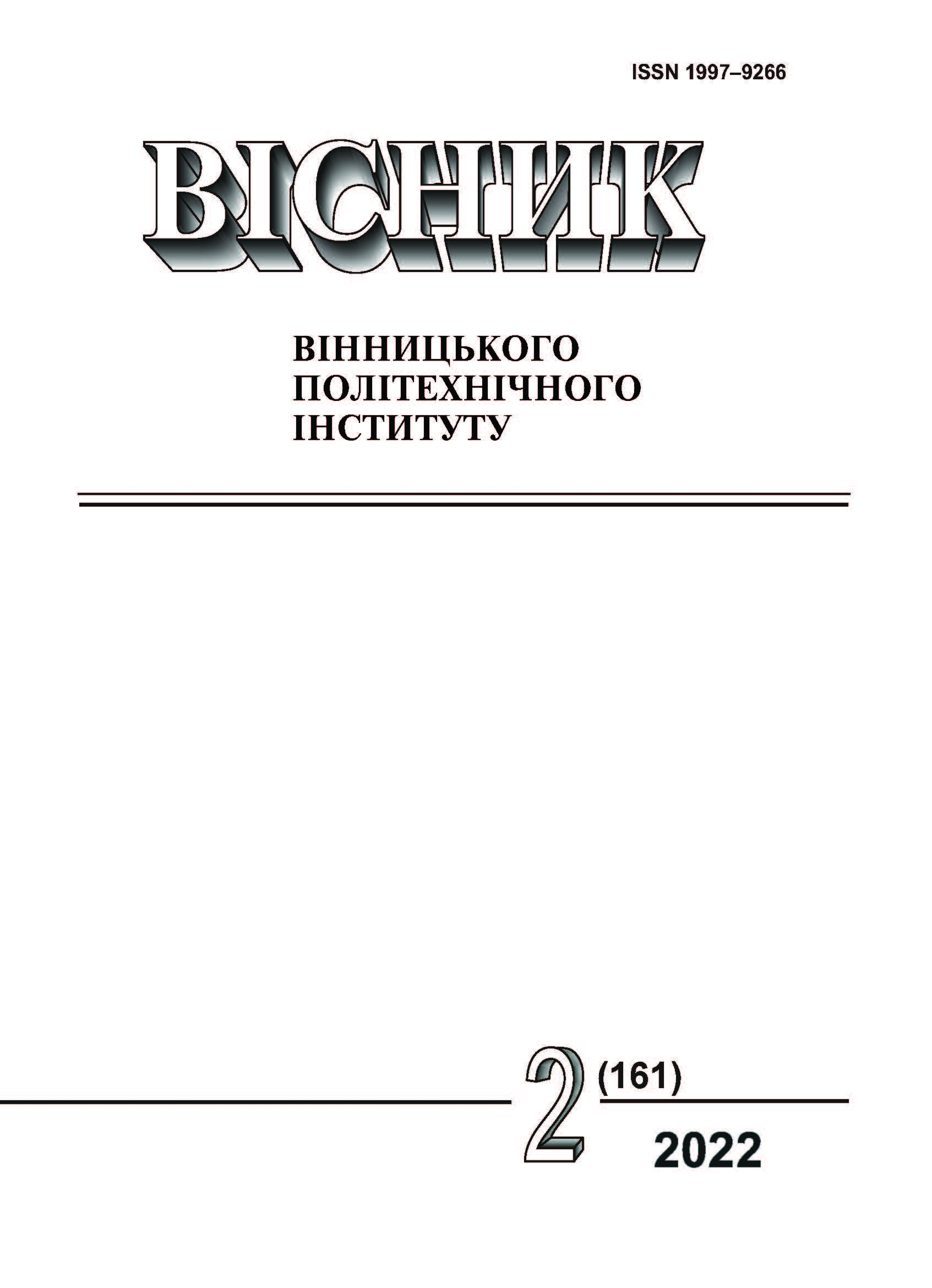Organizational and Technological Measures of Thermomodernization of Obsolete Housing Fund
DOI:
https://doi.org/10.31649/1997-9266-2022-161-2-6-17Keywords:
energy saving, programs of thermal modernization of housing, social housing, warming, housing stock, maneuvering fundAbstract
Maintaining the housing sector of the economy has become one of the biggest and most important burdens that hinders its development. The data on Ukraine’s imports of energy resources are given and it is shown that the total expenditures for heating buildings were estimated by the Government in some years at almost 9.0 % of GDP.
The specific weight of typical series of low-rise buildings of 1960―1980 is given, the indicators of thermophysical properties of wall materials of external walls are shown. The rate of thermal resistance of enclosing structures of the walls of obsolete buildings is more than 3 times lower than current regulations.
An analysis of the current state of regulatory and legal support for the implementation of thermal modernization of obsolete housing stock. Most government programs could not be fully implemented due to lack of government funding. The authors present an analysis of the main shortcomings of the current legislation, which hampered the thermal modernization of mass housing in the 60―80 s of last century.
It is shown that the relative volume of housing construction in Ukraine is several times lower than in neighboring countries, so thermal modernization simultaneously solves several important tasks ― reducing energy consumption, extending the life of obsolete housing and providing additional housing by adding and adding additional floors and sections. On the example of the main series of typical buildings, the methods of reconstruction (methods of extension and superstructure) are proposed. The basic technological methods of insulation of external walls are given.
It is proposed to improve the current legislation and create favorable conditions for the construction of socially affordable housing, which can serve as a maneuverable housing stock to accelerate the thermal modernization of obsolete housing stock. The European Directive on Energy Efficiency of Buildings 2010/31/EU of 31 December 2020 provides for the construction of new buildings in EU countries with class "A" ― almost zero energy consumption (nearly zero-energy building). In terms of integration of the regulatory framework of Ukraine’s construction to EU requirements and the first stage, it is necessary to move from energy efficiency class "C" to class "B", and in the subsequent to class "A".
References
З. А. Гаевская, Ю. С. Лазарева, и А. Н. Лазарев, «Проблемы внедрения системы «зеленых» стандартов,» Молодой ученый, № 16, с. 145-152, 2015.
М. О. Жураковська, «Управління вартістю реновації житлового фонду,» Економічна думка, зб. наук. праць, Тернопільський національний економічний університет, т. 17, № 2, с. 30-46, 2014.
А. И. Менейлюк, И. Н. Бабий, и И. А. Менейлюк, «Влияние технологических особенностей устройства вентилируемых фасадных систем на их теплозащитные свойства,» Вісник ХНУБА, вип. 58, с. 131-135, 2014.
М. Д. Обідник, і І. Н. Дударь, Проблема застарілого житлового фонду в Україні та шляхи її вирішення. ВНТУ. Електронний ресурс. Режим доступу: https://conferences.vntu.edu.ua›itb›paper›view .
А. С. Максимов, і І. В. Вахович, «Вибір оптимальних технічних рішень термомодернізації будівель шкіл,» Шляхи підвищення ефективності будівництва в умовах формування ринкових відносин, вип. 45, Технічний, с. 106-117, 2020.
О. Г. Хохлов, В. І. Козарь, і Л. М. Козарь, «Житловий фонд України ― глобальні проблеми сьогодення. Економічні науки,» Вісник Хмельницького національного університету № 3, с. 207-211, 2019.
Г. І. Онищук, «Реконструкція житла в Україні: досвід, проблеми та шляхи їх вирішення,» Научно-технический сборник, № 59, с. 3-10, Державний науково-дослідний та проектно-дослідний інститут «НДІпроектреконструкція», Київ.
ДБН В.2.6-31:2016. «Теплова ізоляція будівель. Норми проектування. виготовлення і монтажу», Мінегіонбуд України, Чинний від 2017.01.01. Київ: вид. офіц., 2017, 33 с.
Т. А. Долбик-Воробей, Российская молодежь: проблемы и решения. М., РФ: Центр социального прогнозирования, 2005, 648 с.
Т. В. Сердюк, «Організаційно-економічні заходи кредитування термомодернізації застарілого житловоно фонд,» Сучасні технології, матеріали і конструкції в будівництві, с. 80-87, 2016.
М. М. Жербин, и В. И. Большаков, Новая концепция модернизации и надстройки существующих малоэтажных жилых зданий до любого количества этажей. Днепропетровск, Украина: Gaudemaus, 2000, 50 с.
Б. В. Дмитриев, и Г. Н. Якубович, «Реконструкция пятиэтажной массовой застройки и экономичные способы ее проведения,» Промышленное и гражданское строительство, № 8, с. 19-34, 1998.
В. Т. Шаленный, С. Ф. Акимов, и В. Д. Малахов, «Реконструкция жилых зданий одной их первых массовых серий с использованием многоэтажной надстройки из стали,» Экономика строительства и природопользования, № 3 (76), с. 108-122, 2020.
Фонд енергоефективності, [Електронний ресурс]. Режим доступу: https://eefund.org.ua/ .
N. Ruzhynska, O. Sadchenko, V. Lagodiienko, , I. Novykova, and O. Bogdanov, “Marketing Tools in Stimulating Innovative Activity of Enterprises,” International Journal of Management (IJM) ― Scopus Indexed, vol. 11, issue 6, June, pp. 241-251, 2020. [Electronic resource]. Available: www.scopus. com/.authid/detail.uri?authorId=57219234229 .
С. Б. Позмогова, и В. Р. Миначева, «Использование европейского опыта при реконструкции жилого фонда,» Вестник Ул ГТУ. Строительство, № 3, с. 53-56, 2011.
Закон України «Про житловий фонд соціального призначення,» Відомості Верховної Ради, № 19-20, с. 159, 2006.
Програми доступного житла: європейський досвід. [Електронний ресурс]. Режим доступу: http://www.molodkredit.gov.ua/news/npart/programi-dostupnogo-jitla-evropeyskiy-dosvid.html .
Downloads
-
pdf (Українська)
Downloads: 213
Published
How to Cite
Issue
Section
License

This work is licensed under a Creative Commons Attribution 4.0 International License.
Authors who publish with this journal agree to the following terms:
- Authors retain copyright and grant the journal right of first publication.
- Authors are able to enter into separate, additional contractual arrangements for the non-exclusive distribution of the journal's published version of the work (e.g., post it to an institutional repository or publish it in a book), with an acknowledgment of its initial publication in this journal.
- Authors are permitted and encouraged to post their work online (e.g., in institutional repositories or on their website) prior to and during the submission process, as it can lead to productive exchanges, as well as earlier and greater citation of published work (See The Effect of Open Access).





